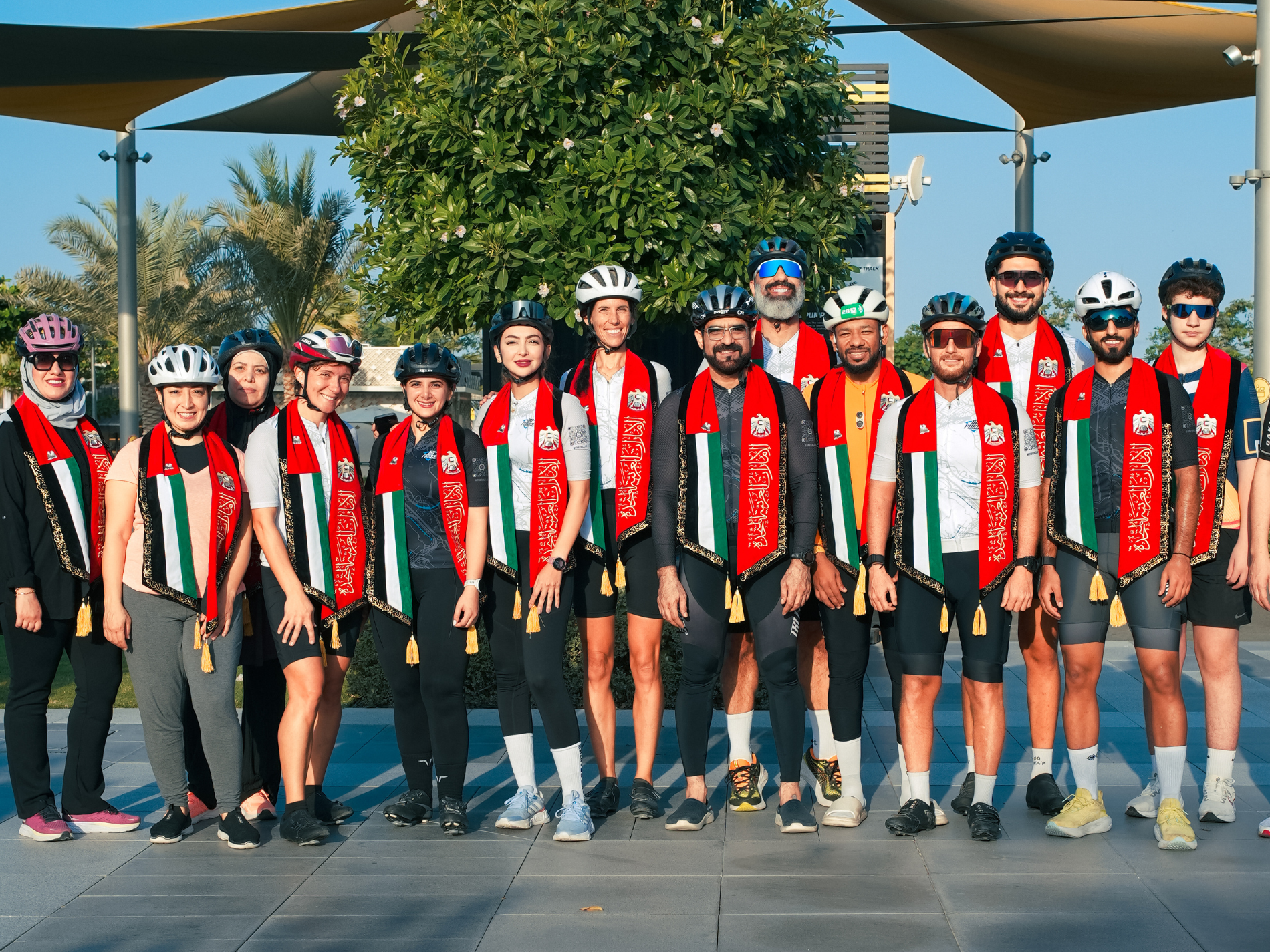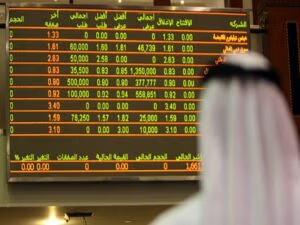While all sectors in the UAE are seeing huge developments, sports is no exception. Whether it’s athletics, martial arts, football, or anything in between, the UAE is ensuring that there’s continuous growth and headway, in every sector, adding feathers to the country’s cap. Earlier, The Finance 360 reported the growing popularity of athletics, and now we deep dive into the trend of ‘triathlon training’; here’s all that we know:
Hussam Bataineh, Founder & Captain of TriForce, UAE, says he’s truly passionate about the growth of triathlon training in the UAE and the community built around it. “Triathlon isn’t just a sport—it’s a lifestyle that teaches discipline, endurance, and mental resilience, blending three core activities: swimming, cycling, and running,” he explains.
How triathlon training stands apart?
Unlike traditional sport fitness, triathlon training offers a holistic approach to fitness. It combines endurance, strength, and flexibility while keeping the workouts varied and engaging. “For instance, Swimming builds cardiovascular endurance and improves breathing techniques, cycling enhances lower body strength and stamina, whereas, running ties it all together, pushing both mental and physical limits,” remarks Hussam.
Moreover, he also believes that approximately 20-30% of people in the UAE are actively following a fitness regime, and this percentage is steadily growing. “Initiatives like organized triathlon races, fitness expos, and community-driven programs are playing a key role in encouraging people to adopt healthier lifestyles,” said Bataineh.
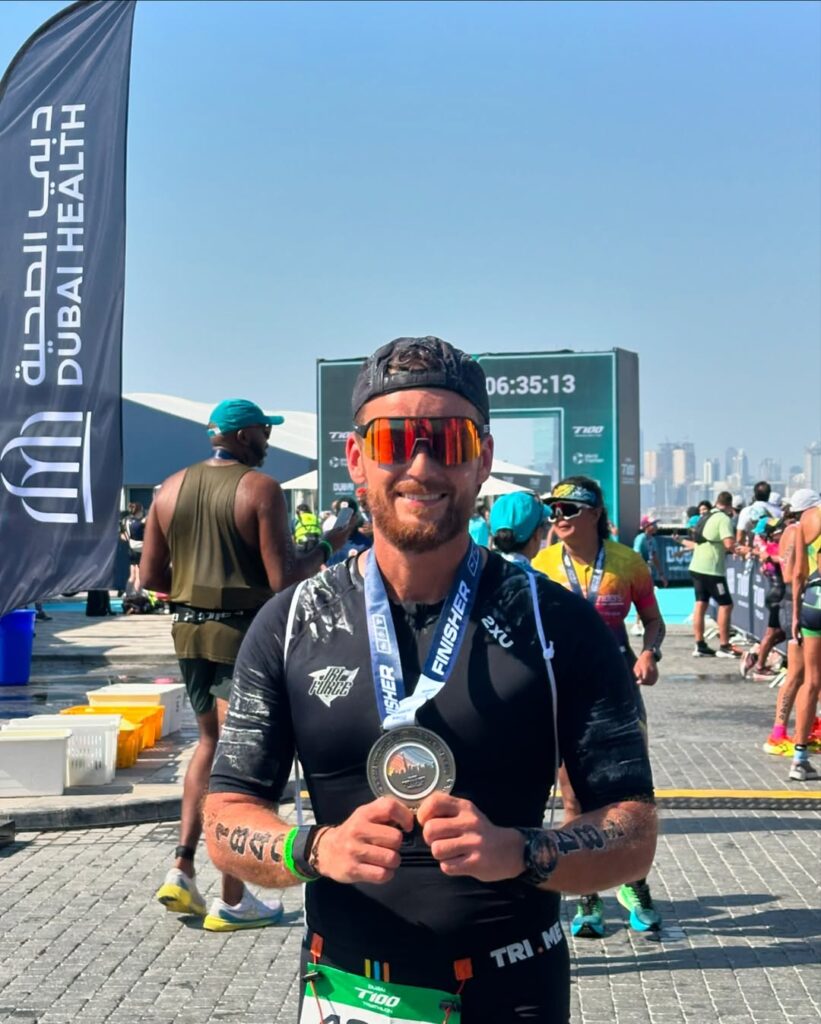
Can triathlon training lead to a burnout?
Given that this training involves a lot, several reports highlight the risk of overtraining and the fatigue that follows. However, Hussam highlights that structured plans, tailored to individual fitness goals and competition timelines, make it simpler. More so, there are training programs structured around key principles.
Variety: Combining swimming, cycling, and running reduces overuse injuries.
Recovery: Emphasize the rest days, stretching, pellets, and proper nutrition for physical recovery.
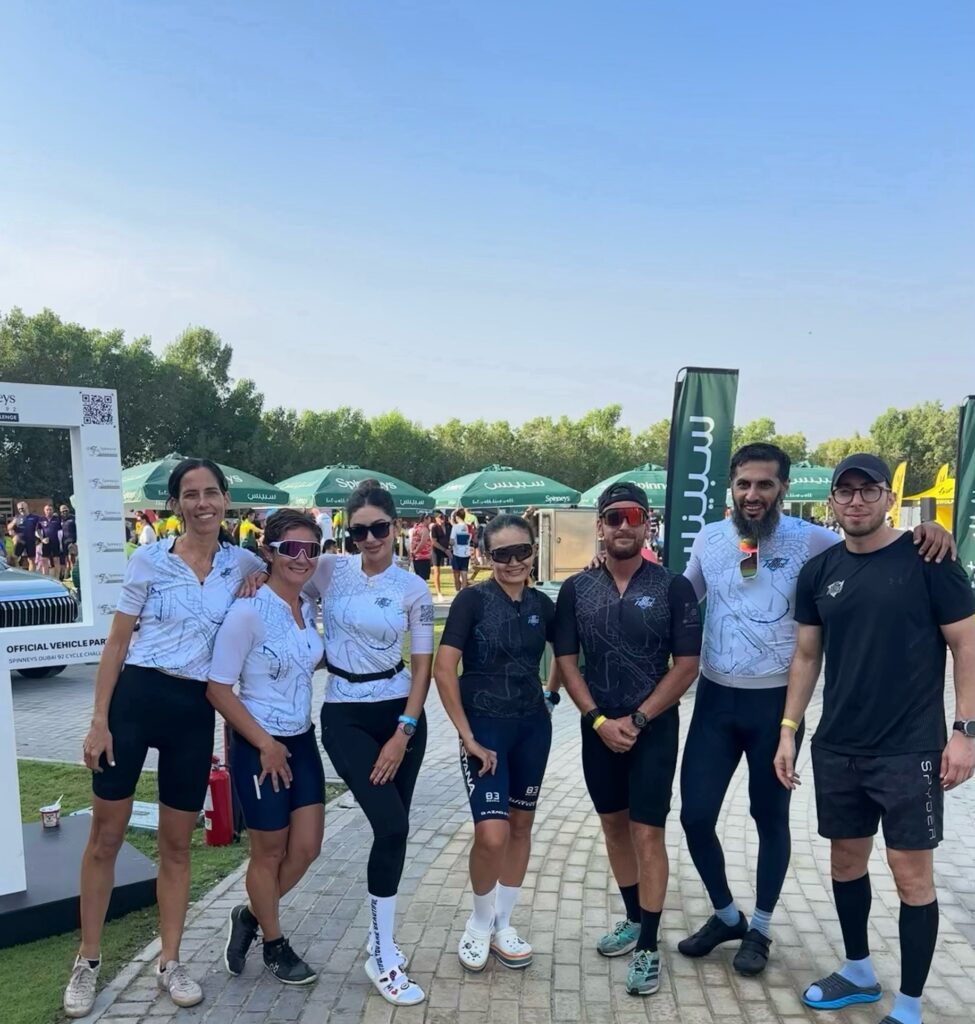
Consistency over Intensity: Training for long-term improvement rather than short-term exhaustion. The weekly duathlon sessions on Wednesdays and Fridays consist of 40 km cycling at an average speed of 36 km/hr followed by a 5-10 km run. On Mondays, it’s balanced with swimming sessions to promote recovery while maintaining progress, followed by an event over the weekend.
Khalid Arar, Professional triathlete, TriForce – Triathlon team Co-Founder, also emphasizes that the importance of triathlon lies in its holistic approach to fitness, promoting a balanced and healthy lifestyle.
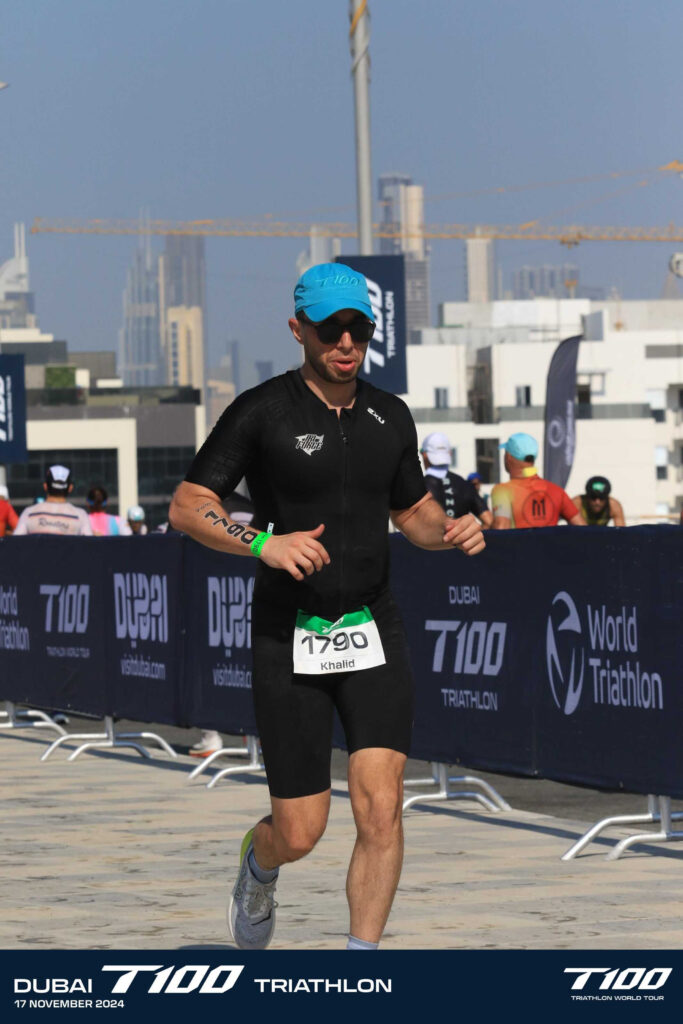
UAE’s aim to move to IRONMAN 70.3 World Championship:
“As a triathlete, I did a lot of Olympic distance triathlon locally and at international events – summer and winter season, some of them went easy and some of them went very hard, especially the humid ones,” says Khalid.
He also highlights his participation in the Dubai T100 100km Triathlon, where he achieved a satisfying result and is now aiming to break his current records with the IRONMAN 70.3 World Championship.
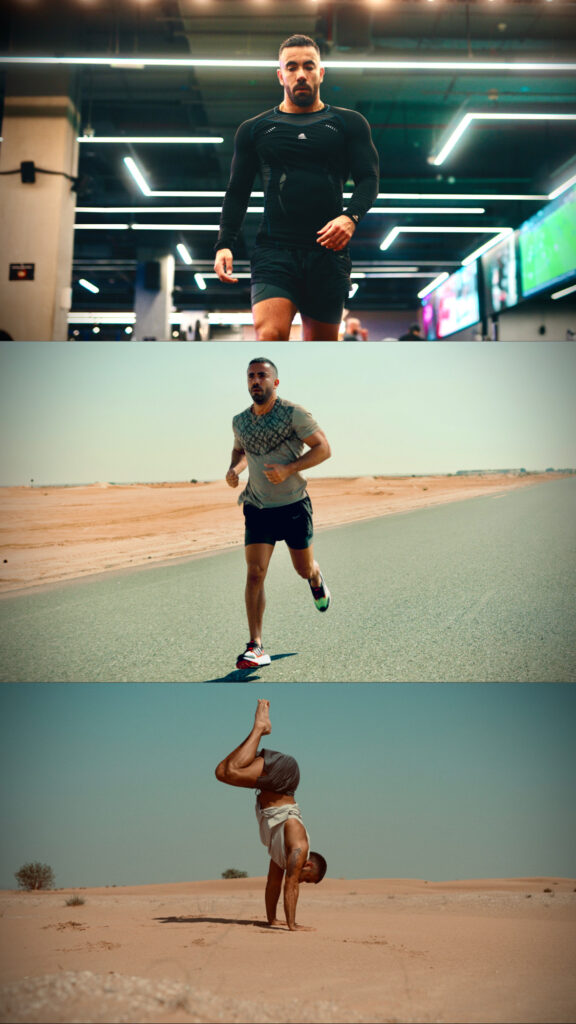
We also hear from Salek Zandiyyeh, Athlete, who reflects upon the beginning of his journey as an athlete, trying various sports like martial arts, tennis, and rock climbing. However, during the onset of the COVID-19 pandemic, he fell behind on his professional training as a climber.
In the UAE, he participated in marathons and various running competitions, that led to a growing interest, sparking the idea of taking on greater challenges like triathlon.
“I realized how popular this sport is among people of all ages in the beautiful Emirates, despite the heat in summer. A few weeks ago, they hosted one of the largest triathlon competitions in the world, called t100, which was executed perfectly and beautifully. I can highlight its role in building the most important muscle in the body, the heart,” says Salek.
As per his knowledge and expertise, he recommends incorporating weight training, depending on the athlete’s goals, to maintain muscle shape.
“The days I train with my group are among my most energetic days. When I started this sport, my body and mind were already familiar with long-distance running. However, for anyone looking to start, there are no limitations. You can be one of those who participates in any of them or none at all; what truly matters is consistency and being part of groups that engage in these sports,” explains Zandiyyeh.
“My first long run was 30 kilometers. In all these sports, running has been a way for me to confront myself. Swimming, running, and cycling are all sports that can independently keep your mind and body fit, and imagine what it’s like to combine all three. For me, swimming has been the toughest part, and I am currently training for it. My last competition as a triathlete, alongside my team, was in a relay format where each participant completed one leg of the race. I was the finisher and, of course, the runner, completing 10 kilometers. It was a very challenging and delightful experience alongside my teammates,” he concludes.
What is the outlook of women triathletes on this training?
Likewise, for women, triathlon training encourages goal setting and personal growth, making it a great way to challenge themselves and boost confidence. However, there are a few challenges that may arise, according to Shaima Mahmoud Awad, Triathlon professional and Co-Founder, Triforce.
She helps women work on their fitness goals at the beginner level but highlights that some “lack confidence, fear accidents or injuries, and face time constraints due to family or work responsibilities.” Additionally, she thinks there is a gap that needs to be addressed in terms of finding proper gear (such as bikes and clothing), and that there are limited female-friendly spaces or supportive communities.
“Yes, I dream of pushing my limits further and aim to soon complete a full Ironman distance, having already achieved the Half Ironman. Taking my fitness to an international level is a goal I am excited to reach,” Shaima says proudly.
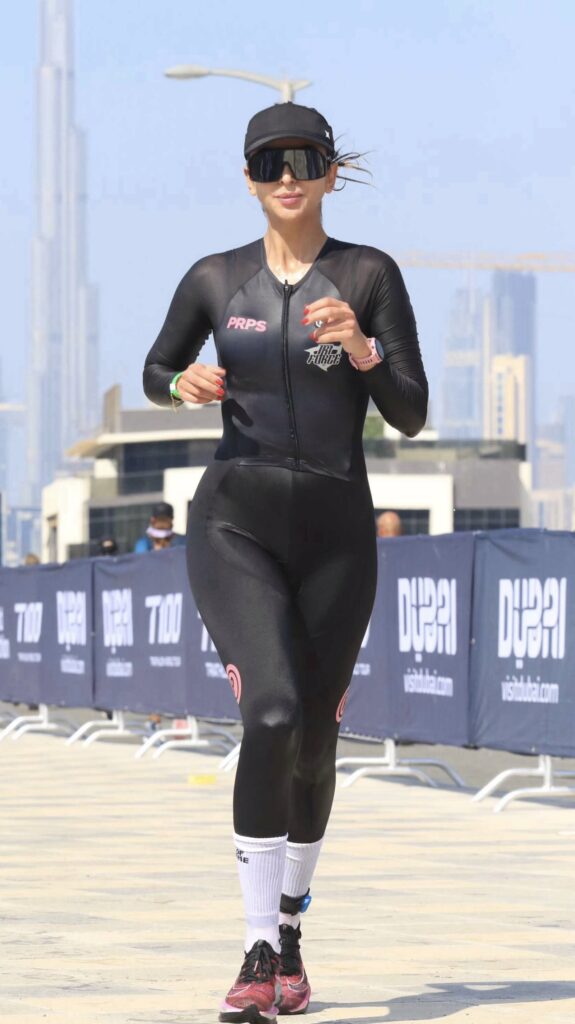
Hussam echoes similar thoughts, stating that the UAE’s climate can be demanding, especially during the summer months; often requires early morning or indoor training sessions.
Credit: All Images Supplied


